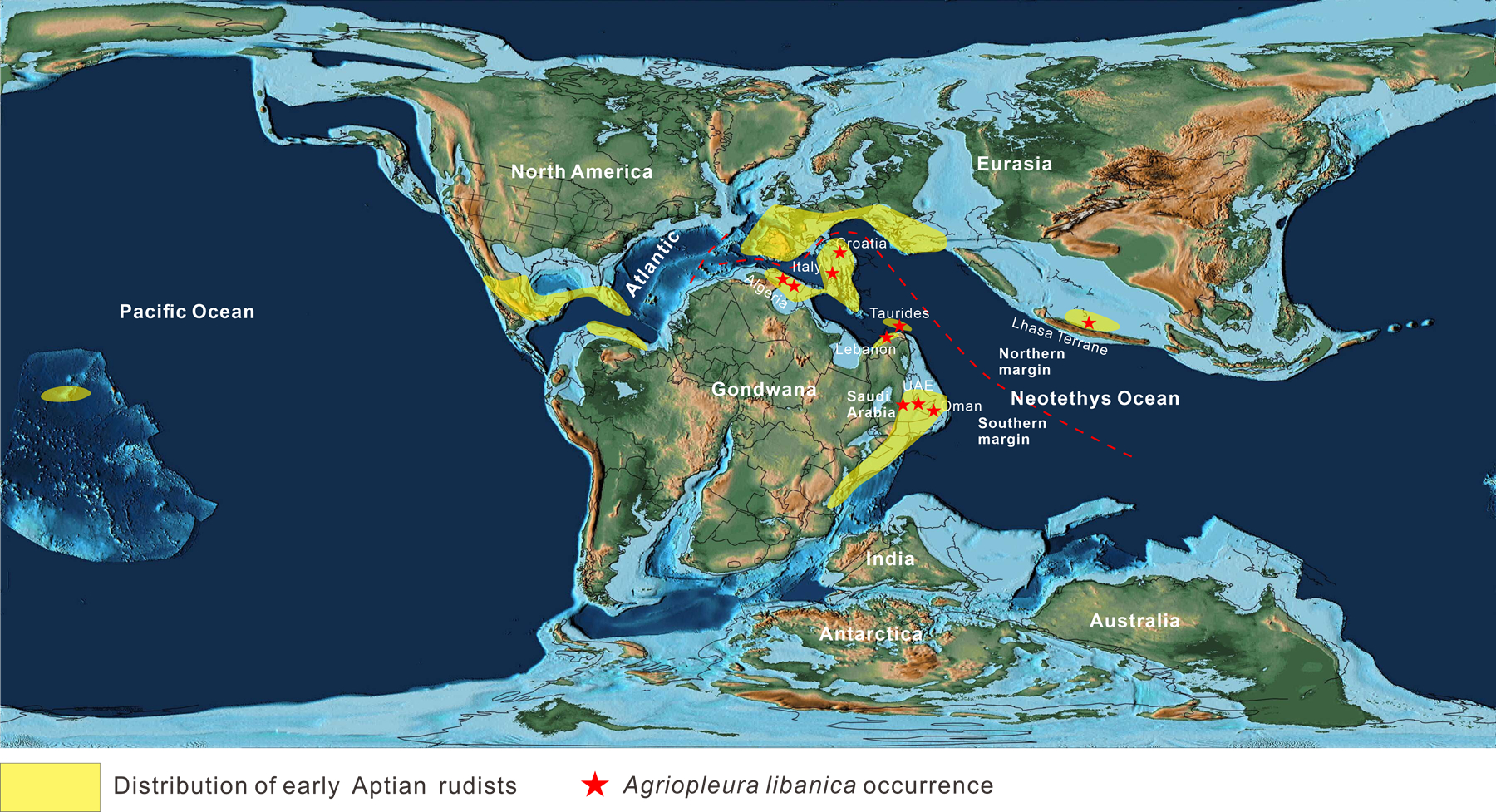The Late Jurassic–Cretaceous Hippuritida Newell, 1965 (rudist bivalves) was sessile, epifaunal organisms that abundantly colonized the tropical and subtropical shallow carbonate platform tops and gentle slopes. Their rapid evolution and extensive geographic distribution make rudists particularly valuable for Cretaceous biostratigraphic correlations and paleoenvironmental reconstructions. The Langshan Formation, extensively distributed in the northern Lhasa Terrane of the Tibetan Plateau, has long been considered to have been deposited from the Late Aptian to the Early Cenomanian. However, convincing sedimentary or paleontological evidence for the Early Aptian interval has remained notably scarce.
Recently, YE Kai, a Master’s student at the Nanjing Institute of Geology and Palaeontology, Chinese Academy of Sciences (NIGPAS), under the joint guidance of Associate Porfessor GUO Wen (NIGPAS) and Associate Porfessor RAO Xin (Northwest University), collaborated with Prof. WANG Ming (Jilin University), Prof. Peter W. Skelton (The Open University, UK), and other researchers, reports the first record of Early Aptian (late Early Cretaceous) radiolitid rudist bivalves—Agriopleura libanica (Astre)—from the Langshan Formation in the Nima Basin, northern Lhasa Terrane. This taxon represents the oldest rudist fossil record currently known in China. The relevant research findings have been published in the international journal Palaeoworld.
This team collected well-preserved right-valve specimens of Agriopleura libanica, together with associated Offneria murgensis fossils, from the limestones of the Langshan Formation in the Zhongcang area of Nima County. The comparison between Ag. libanica and Auroradiolites supports the hypothesis that Auroradiolites descended directly from Ag. libanica, as evidenced by shared ligamentary, dental and myophoral structures.
The Agriopleura libanica–Offneria murgensis assemblage is an index of the lower Aptian of the southern Tethyan Arabian–African margin. The discovery of this assemblage in the Lhasa Terrane confirms the presence of a carbonate seaway in the Nyima region during the early Aptian (late Early Cretaceous), highlighting the significance of the Langshan Formation for reconstructing the paleogeography of northern Lhasa Terrane and the evolution of the Bangong-Nujiang Ocean. The occurrence of A. libanica in the Lhasa Terrane fills a critical geographic gap, bridging its known distribution from Arabia to East Asia during the early Aptian. It represents the first record of this species on the northern margin of the Tethys, as well as the first documentation of early Aptian rudists along the northern margin of the eastern Tethyan Ocean. These discoveries challenge the traditional division between northern and southern Tethyan rudist provinces, demonstrating cross-Tethyan faunal connectivity during the early Aptian.
This study is financially supported by the National Natural Science Foundation of China, the Second Tibetan Plateau Scientific Expedition and Research Program, the Scientific Research Project of the Education Department of Jilin Province, and the State Key Laboratory of Palaeobiology and Stratigraphy.
Reference: Kai Ye, Xin Rao*, Quewang Danzeng, Peter W. Skelton, Bintao Gao, Yiwei Xu, Ting Ruan, Kun Liang, Wen Guo, Ming Wang*. First record of early Aptian (Early Cretaceous) radiolitid Agriopleura libanica (Astre) from the Langshan Formation, northern Lhasa Terrane: Oldest rudist bivalves in China. Palaeoworld. https://doi.org/10.1016/j.palwor.2025.201054.

Fig. 1 (A) Tectonic framework of the Qinghai-Xizang (Tibet) Plateau (modified from Li et al., 2006) and (B) simplified geological map of research area in the Zhongcang region (modified from Xie and Zou, 2002).

Fig. 2 Agriopleura libanica(Astre) from Nyima

Fig. 3 Chronostratigraphic ranges of Cretaceous rudists in the Langshan Formation, Lhasa Terrane

Fig. 4 Paleogeographic distribution of early Aptian Agriopleura libanica.
Download:
